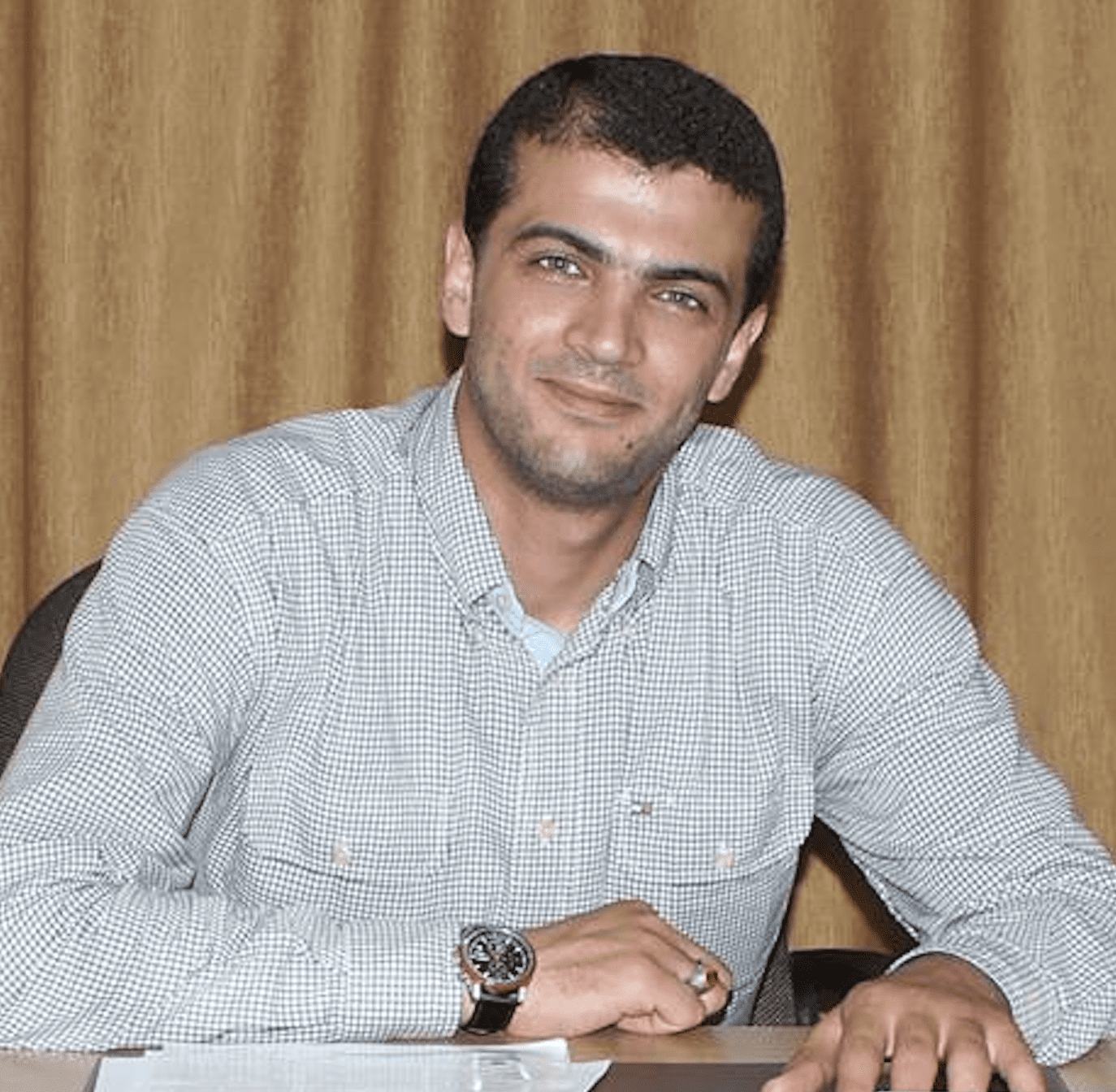Nayef Mustafa Suleiman Turaani is a Palestinian refugee from the town of Samakh in the Tiberias district of Palestine. He was born in 1955 in Al-Hamma, located in the triangle of the border between Syria, Palestine and Jordan, after his family was displaced from Samakh during the 1948 Nakba. His family moved to Jobar, five kilometres east of the Syrian capital, Damascus, and then settled in the Yarmouk camp for Palestinian refugees. He began his studies in UNRWA schools in Yarmouk in 1962 and went on to read civil engineering at university, after which he joined the ranks of the Popular Front for the Liberation of Palestine, fighting in its ranks in the face of the Israeli invasion of Lebanon and to defend the people of Lebanon and Palestine.
Recalling the resistance’s removal from Lebanon, Nayef says they suffered days under siege in the Lebanese capital, Beirut. “We were surprised by the decision to leave Lebanon, and it was a clear plot to dismantle the Palestinian revolution. The resistance factions left for several countries, so I left for Syria, where my family lives.”
“We left Beirut at noon and arrived in Tartous at dawn. Thousands of families welcomed us at the coast in Tartous; many were asking about their sons and their families. Some had pictures and asked if anyone had seen their loved ones,” he explains.
“We rode the buses and headed to the military base of Al-Dhanin, east of Damascus, and we were issued identities with new names for those who wanted, and the weapons we had were handed over.”
READ: ‘In every word I speak and everything I do, I’m thinking of Palestine,’ singer tells Brazil
At first, he says, “we were like lost people” because they were no longer bearing arms as they had been accustomed to doing for over 100 days of fighting. “Our lives consisted of a willingness to sacrifice and die for the sake of the homeland,” he explains.
After he spent 14 days back with his family in Yarmouk, Nayef joined the Khalkhala military airport, south of Damascus, at the request of the Syrian government. In 1983 he moved to Jordan and worked as an engineer.
Since his retirement Nayef has been writing the history of Samakh, the town from which his family originated. He says his experience of the history changed after his father’s death when he played a more active role in the family and learnt more about its history.
“We collected photos and documents that I and the people of Samakh have, such as my father’s wedding card – from 1936, birth certificates for the people of the town and land registration documents, all of which I have in the archive,” he says.
“My desire to write and document increased, and I began searching for the elderly who were born in the village and lived there before the Nakba.”
The town of Samakh was completely ethnically cleansed in 1950, and only three landmarks of the basalt base remained including traces of the railway and train carriages, in addition to the station building and the building of the Hassan Saeed Al-Damwani shop. “The Zionists established nine settlements on its land: Kinneret, Dajania Elif, Dajania B, Beit Zeira, Afokim, Ashdot Yaakov, Sa’ar Hagolan, Masada and Memghan,” Nayef says, adding that the Arabic town of Samakh is no longer.
There were approximately 3,000 Palestinians living in Samakh in 1946 and it boasts among its most famous figures the late Fayez Qandil, the political activist Khaled Al-Tar’ani and the former deputy head of the Jordanian Bar Association Falah Madi.
Learning about his town’s history he found that Zionist gangs had tried to purchase land from the Palestinians but they had refused to sell. In an effort to force their hand, the son of Samakh’s mukhtar (town chief) was kidnapped. When the Zionists came to negotiate his release in return for the purchase of the land, Suleiman Turaani said he considered that his son had been martyred and refused their conditions.
“What also caught my eye was the respect for women; giving them all their rights,” Nayef says. “I wrote about the women’s revolution and the march of torchlights against the occupation during the tripartite aggression on Port Said in Egypt.”
“The former British colonial power and the Zionist occupation, formerly and currently, have tried to conquer the Palestinian people, end their cause and steal their land, but they have not succeeded,” Nayef says.
“The waves of normalisation with the Zionist enemy by Arab regimes and some Palestinian parties have also not succeeded in marginalising the Palestinian cause. We have found this generation of Nakba survivors stronger and fiercer than its fathers and grandfathers.”
His work to collate the memories of his town and of Palestinians as a whole is part of the resistance, he explains. “Through the process of archiving, documenting and circulating these stories, the old do not die and the young will not forget.”




















